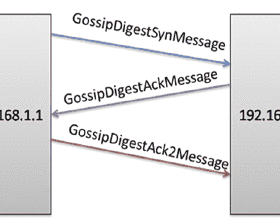In the first part of the paper, we have studied the computational privacy risks in distributed computing protocols against local or global dynamics eavesdroppers, and proposed a Privacy-Preserving-Summation-Consistent (PPSC) mechanism as a generic privacy encryption subroutine for consensus-based distributed computations. In this part of this paper, we show that the conventional deterministic and random gossip algorithms can be used to realize the PPSC mechanism over a given network. At each time step, a node is selected to interact with one of its neighbors via deterministic or random gossiping. Such node generates a random number as its new state, and sends the subtraction between its current state and that random number to the neighbor; then the neighbor updates its state by adding the received value to its current state. We establish concrete privacy-preservation conditions by proving the impossibility for the reconstruction of the network input from the output of the gossip-based PPSC mechanism against eavesdroppers with full network knowledge, and by showing that the PPSC mechanism can achieve differential privacy at arbitrary privacy levels. The convergence is characterized explicitly and analytically for both deterministic and randomized gossiping, which is essentially achieved in a finite number of steps. Additionally, we illustrate that the proposed algorithms can be easily made adaptive in real-world applications by making realtime trade-offs between resilience against node dropout or communication failure and privacy preservation capabilities.
翻译:在本文第一部分,我们研究了针对本地或全球动态监听者分发计算协议中计算隐私风险的计算,并提议了一个隐私-保护-简化-兼容机制(PPSC),作为通用隐私加密子程序,用于基于共识的分布计算。在本文第一部分,我们表明常规的确定性和随机八卦算法可用于在特定网络上实现 PPSC 机制。每一步,就选择一个节点,通过确定性或随机流言与其邻居进行互动。这种节点产生随机数字,作为新状态,并将当前状态和随机数字之间的减值发送给邻居;然后邻居更新其状态,将收到的值加到当前状态。我们通过证明无法重建基于八卦的 PPSC 机制产出的网络投入,防止拥有全部网络知识的窃听者,并表明PPSC 机制可以在任意的隐私级别上实现差异。这种节点生成一个随机的隐私,将当前状态和随机数字发送;通过随机和分析性的算法,我们提出了一个稳定的排序,从而可以明确地在真实的版本中实现。





















